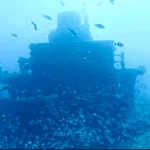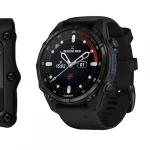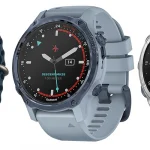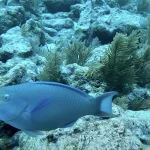Understanding Florida’s Thermocline Phenomena
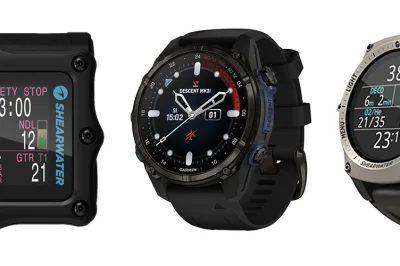
Table of Contents
- Understanding Florida’s Thermocline Phenomena
- Why Temperature Tracking Matters: Beyond the Basics
- How Dive Computers Transform Florida Diving Protocols
- Common Misconceptions About Thermocline Prediction
- Avoiding Mistakes: Selecting the Right Dive Computer for Florida Waters
- Future Trends: Machine Learning and Thermocline Prediction
- Comparative Analysis of Top Dive Computers
- Leveraging Dive Computer Data for Environmental Insights
Introduction
Scuba divers exploring the waters of Florida face unique challenges due to the region’s distinct underwater thermal conditions. The precise tracking of these thermoclines—which are sharp temperature gradients at certain depths—is crucial not only for safety but also for enhancing the diving experience. Dive computers have emerged as essential tools, predicting and adjusting to these conditions with stunning accuracy. This post aims to guide divers in making informed decisions when purchasing a dive computer by exploring the technological breakthroughs in temperature tracking and prediction.
Understanding Florida’s Thermocline Phenomena
Why Temperature Tracking Matters: Beyond the Basics
The critical role of temperature tracking in dive computers extends well beyond simply recording water temperature—it directly influences diver safety and overall diving experience in nuanced ways. Accurate temperature data enables divers to select appropriate thermal protection, which can prevent hypothermia in colder waters—a potentially life-threatening condition if not carefully managed. Conversely, it helps avoid overheating, which can impair cognitive function and complicate decompression management.
While temperature sensors in dive computers typically measure ambient water temperature, their data is crucial for informed gear choices such as selecting wetsuit thickness or deciding when to use a drysuit. This decision-making process is especially vital in regions like Florida, where thermoclines—sharp temperature gradients underwater—can drastically change conditions within a single dive. Real-time temperature tracking allows divers to anticipate and adapt to these changes, maintaining comfort and reducing physiological stress.
That said, many dive computers derive temperature readings indirectly from pressure sensor corrections rather than dedicated temperature sensors, resulting in varying degrees of precision. Most devices typically have a resolution of about 1°C, with some high-end models achieving finer sensitivity (0.1°C). Additionally, the sensor’s response time, sometimes several minutes, affects how quickly the displayed temperature reflects actual depth changes. This lag means divers should interpret temperature data as indicative rather than absolute instant readings, especially during rapid descents or ascents.
Understanding these technical limitations is key—not only because it affects safety but also because maintaining comfort influences the overall dive quality. Proper temperature awareness helps reduce fatigue caused by thermal stress and supports sustained focus underwater. Furthermore, temperature data from dive computers also contributes to environmental awareness, helping divers better understand marine conditions and even supporting citizen science efforts monitoring oceanographic changes.
Ultimately, temperature tracking in dive computers empowers divers with actionable insights that safeguard health and enhance diving enjoyment. Yet, divers must combine this data with personal experience and environmental cues, recognising the technology’s boundaries to make the safest choices.
Why Temperature Tracking Matters: Beyond the Basics
How Dive Computers Optimise Safety Protocols by Adjusting for Thermal Variations During Dives
Modern dive computers represent a major breakthrough in dive safety, especially for Florida’s thermally dynamic waters. Unlike traditional dive tables, these sophisticated devices continuously measure and respond to temperature changes in real time, enabling much safer and more customised dive management. Here’s how they transform diving protocols with a focus on thermal adjustments:
Algorithm Functionality Tailored to Thermal Conditions
Dive computers use advanced temperature compensation algorithms—such as Bühlmann ZHL-16C and Varying Permeability Model (VPM-B)—to adapt decompression calculations based on ambient water temperature changes. When diving in cooler layers below Florida’s thermocline, these algorithms shorten the no-decompression limits (NDLs) because lower temperatures affect how inert gases like nitrogen are absorbed and released in the body. This means:
- Decompression models enforce longer safety stops and slower ascent rates in colder water to reduce decompression sickness (DCS) risks.
- The device continuously updates inert gas loading estimates as water temperatures shift during the dive.
- These dynamic adjustments improve accuracy over static, table-based approaches and enhance safety in environments with steep thermal gradients.
Integrating Physiological and Environmental Factors
Leading dive computers go beyond just temperature sensing by integrating a variety of factors affecting your body’s response underwater. Some models incorporate:
- Skin temperature differentials between your core body heat and the surrounding water.
- Metabolic indicators such as breathing rate and physical exertion levels.
- Previous dive profiles and surface intervals to modify decompression schedules holistically.
This multi-factor approach means your dive computer can tailor decompression protocols to your specific physiology and thermal exposures, adding layers of personalised safety.
Real-Time Safety Adjustments and Alerts
During the dive, these computers constantly gather data on depth, time, and temperature, instantly revising safety parameters if conditions change. Key real-time features include:
- Dynamic decompression recalculations: If you enter colder water unexpectedly or extend dive time, the computer recalculates decompression stops and ascent limits to prevent DCS.
- Multi-dive nitrogen tracking: Ensures cumulative gas loading from repetitive dives is properly managed, factoring in varying temperatures between dives.
- Alert systems: Warnings for unsafe ascent rates, excessive depth, or thermal drops help prevent risky behaviours.
Proven Accuracy and Safety Benefits
Extensive lab and field testing demonstrate these dive computers stabilise temperature readings quickly (often under seven minutes) and maintain high precision across changing thermal conditions. The result:
- Divers in Florida’s variable thermal layers benefit from lower DCS rates—recreational divers see rates as low as 0.01% to 0.04% when following computer guidelines.
- This technology effectively bridges the knowledge gap about how thermoclines influence decompression physiology, making dives safer and more predictable.
The ability to integrate thermal data into safety protocols fundamentally changes how divers approach dive planning and execution in Florida’s waters, ensuring each dive adapts dynamically to the environment.
How Dive Computers Transform Florida Diving Protocols
Common Misconceptions About Thermocline Prediction
Among scuba diving enthusiasts, there’s a widespread belief that dive computers can reliably predict and notify divers of thermoclines in real-time, dynamically adjusting to changing underwater temperature layers to enhance safety. However, this expectation oversimplifies the technological capabilities and sensor limitations embedded in current dive computers.
First, it’s important to clarify what thermocline detection entails: it’s about sensing a rapid change in water temperature across a narrow depth range, which requires a device to have highly responsive, accurate temperature sensors. While dive computers do measure temperature, their ability to quickly and precisely detect these abrupt variations is limited by several factors.
- Sensor Response Time: Dive computer temperature sensors vary considerably in how fast they register environmental changes. Some devices respond within 60 seconds (considered quick), but many have intermediate (60–120 seconds) or slower response times. This means a diver might pass through a thermocline before the computer fully reflects the temperature shift.
- Placement of Sensors: Most dive computers are wrist-worn, causing sensors to be influenced by body heat, which slows their response compared to free-hanging sensors in the water. This proximity often results in lagged temperature readings that don’t instantly capture the thermocline’s presence.
- Data Integration Limits: Although temperature changes are recorded, current dive computers generally don’t integrate this data into decompression safety algorithms. In other words, detecting a thermocline doesn’t automatically adjust no-decompression limits or stop times—these remain governed mainly by pressure and depth data.
- Environmental Influences: Water currents, diver movement, and exposure to sunlight or thermal layers distort sensor accuracy and create challenges for consistent thermocline detection under real diving conditions.
Another common myth is the idea that thermocline prediction can serve as an advanced safety feature directly impacting dive planning. The reality is that today’s dive computers can alert divers to temperature changes, but their practical utility lies more in enhancing situational awareness rather than dynamically altering safety parameters or decompression schedules based on thermal layers.
Understanding these limitations helps divers make better decisions when choosing a dive computer. Devices boasting rapid sensor response times and sensitive temperature logging are beneficial tools for recognising thermal shifts, but divers should not expect them to function as precise, real-time thermocline prediction systems with direct safety interventions.
Common Misconceptions About Thermocline Prediction
Common Pitfalls When Selecting a Dive Computer for Florida Waters—and How to Avoid Them
Choosing the right dive computer for Florida’s unique underwater environments requires more than just picking the latest model off the shelf. Avoiding certain common mistakes ensures optimal safety, functionality, and comfort tailored to Florida’s conditions.
1. Overlooking Budget and Dive Frequency
Mistake: Many divers buy high-end or technical models that go beyond their actual diving needs or budget, leading to unnecessary complexity and cost.
How to avoid:
- Match the device to your diving habits: Occasional divers benefit from affordable but reliable computers that offer essential nitrox support without breaking the bank.
- For more frequent divers: Mid-range options balance advanced features like air integration and freediving modes with affordability.
- Technical and CCR divers: Should opt for premium devices designed for extended depths and gas mixes.
This tiered approach helps you avoid overspending or overcomplicating your setup with features you don’t need.
2. Ignoring Florida-Specific Features
Mistake: Neglecting compatibility with nitrox and freedive modes can severely limit safety and dive experience in Florida’s prevalent reef and spring sites.
How to avoid:
- Prioritise nitrox-enabled computers: Many Florida dive sites rely on enriched air mixes, making this a critical feature.
- Choose freedive-capable models: If you incorporate freediving or shallow snorkelling along with scuba, pick devices that include dedicated freediving modes.
These choices align your computer’s capabilities precisely with Florida’s dive environments to enhance safety and performance.
3. Inadequate Familiarisation with Your Dive Computer
Mistake: Assuming the dive computer interface is intuitive without prior practice results in confusion and improper use underwater.
How to avoid:
- Spend dedicated time on land: Learn navigation menus, set your nitrox parameters, and simulate dive scenarios to understand alerts and decompression data.
- Practice interpreting alerts: Developing muscle memory before hitting the water ensures you react swiftly to critical warnings.
Investing time before the dive maximises your computer’s safety benefits while minimising stress below the surface.
4. Neglecting Maintenance and Software Updates
Mistake: Skipping pre-dive checks, firmware updates, and battery maintenance can cause malfunctions or inaccurate readings during your dive.
How to avoid:
- Use a comprehensive pre-dive checklist: Include battery levels, O-ring condition, sensor calibration, and ensure your firmware is up to date.
- Schedule routine maintenance: Like battery replacement and servicing to extend device longevity and reliability.
Maintaining your computer conscientiously ensures dependable operation throughout Florida’s diverse thermal and depth conditions.
5. Shortcutting the Buying Process
Mistake: Divers often buy online based only on specs and price without hands-on experience or expert advice, leading to poor fit or feature mismatch.
How to avoid:
- Visit local dive shops: Try on devices to assess comfort, button responsiveness, and screen visibility in conditions similar to Florida’s bright, clear waters.
- Consult experienced dive professionals: They can recommend models best suited for your dive style, physical gear setup (e.g., sidemount), and Florida’s environments.
This approach reduces returns and enhances confidence in your purchase decision.
By carefully avoiding these common errors, divers will select a dive computer optimised not only for Florida’s temperature variations and thermoclines but also for personal comfort and safety.
My Favorite Dive Computers
I have compared the 3 top diving computers for each category to help making the right choice easier:
Avoiding Mistakes: Selecting the Right Dive Computer for Florida Waters
Future Trends: Machine Learning and Thermocline Prediction
Machine learning (ML) is increasingly transforming thermocline prediction by overcoming limitations traditional statistical models face when dealing with complex oceanographic data. Unlike linear methods that capture only broad trends, ML algorithms excel at recognising intricate, non-linear relationships among variables such as temperature, salinity, depth, and geographic location, making thermocline modelling far more accurate and reliable for diving applications.
Several ML approaches are emerging as particularly effective:
- Artificial Neural Networks (ANNs) and Support Vector Machines (SVMs): These models have demonstrated high accuracy in predicting thermocline thickness and dynamics. In studies related to thermal stratification, k-Nearest Neighbor (k-NN) algorithms even outperformed others in some contexts, boasting R² values above 0.9, which translates to precise depth and intensity predictions.
- Deep Learning Architectures: Innovative frameworks like Ocean-Mixer integrate multiple modules to deliver multi-step thermocline forecasts. These architectures offer promise for capturing temporal changes and regional variability in thermal layers, though widespread adoption in diving tech is still progressing.
The key advantages ML brings to thermocline prediction—crucial for dive computer technology—include:
- Non-linear pattern recognition: Machine learning models identify abrupt temperature shifts common in thermoclines that linear methods miss, enabling detailed stratification modelling even under fluctuating ocean conditions.
- Multi-variable integration: By simultaneously analysing temperature, salinity, geographic positioning, and temporal data, ML models produce comprehensive 3D maps of thermal gradients, which can inform dive planning and safety decisions.
- Regional adaptability: ML accounts for diverse oceanographic regimes, from tropical reefs to temperate Florida waters, supporting localised thermocline predictions tailored for specific dive locations.
Applications extend beyond ecological and climatic research to future-oriented diving technologies that could:
- Provide real-time thermocline depth and thickness estimation during dives.
- Enhance dive computers with dynamic environmental awareness, alerting divers to potential thermal layers impacting buoyancy and marine life behaviour.
- Foster integration of sensor data and ML algorithms in compact, energy-efficient platforms suitable for underwater conditions.
Challenges remain in balancing model complexity with computational efficiency, ensuring robust training data across variable dive sites, and integrating ML outputs seamlessly within user-friendly dive computer interfaces. As machine learning methods continue evolving—leveraging hyperparameter optimisation and sensor fusion—scuba divers can anticipate future devices that more precisely predict thermoclines, enhancing both safety and dive experience.
Future Trends: Machine Learning and Thermocline Prediction
Comparative Analysis of Top Dive Computers Featuring Thermal Tracking in 2025
When selecting a dive computer with advanced thermal tracking capabilities for Florida waters, it’s essential to focus on models engineered to accurately monitor and log water temperature, handle warm-to-variable thermal conditions, and provide reliable data in both recreational and technical diving environments. While most modern dive computers include ambient water temperature sensors to support dive profile calculations, several standout models incorporate enhanced thermal tracking or features that elevate usability in temperature-sensitive scenarios.
Below is an in-depth comparison of four leading dive computers known for their thermal tracking sophistication, display technology, durability, and user-friendly interfaces. These models are well-suited for Florida divers seeking devices that predict and respond to thermoclines with stunning accuracy, alongside other critical functions:
- Garmin Descent Mk3i:
- Thermal Tracking: Equipped with precise ambient temperature sensors and GPS-enabled surface navigation, facilitating spatial temperature gradient mapping during dives.
- Display: Vibrant AMOLED, providing excellent visibility in bright Florida sunlight and low-light underwater conditions.
- Battery: Rechargeable, with power management suited for extended dives.
- Additional Features: Multi-sport smartwatch functions, air integration, advanced dive modes including trimix and rebreather support.
- Ideal For: Technical and advanced recreational divers seeking robust thermal data and multi-environment tracking.
- Shearwater Perdix 2:
- Thermal Tracking: Incorporates ambient temperature logging with high sensitivity, designed for cold and warm water extremes, making it flexible for thermal profiling.
- Display: High-contrast color LCD, optimised for underwater readability.
- Battery: Uses user-replaceable AA batteries with impressive longevity, even under cold conditions.
- Additional Features: Customisable dive modes (open circuit, rebreather), robust titanium bezel ensuring durability.
- Ideal For: Divers requiring customisable thermal and gas tracking during technical or multi-gas dives.
- Shearwater Teric:
- Thermal Tracking: Offers detailed ambient temperature logging enhanced by advanced decompression models sensitive to thermal variations.
- Display: Sharp AMOLED touchscreen with multi-color capability for clear thermal data visualisation.
- Battery: Rechargeable, capable of handling long multi-dive sessions.
- Additional Features: Wireless air integration, user-customisable alerts, vibration warnings for temperature and safety stops.
- Ideal For: Technical divers and those seeking an advanced, feature-rich computer adaptable to diverse Florida water conditions.
- Suunto EON Core:
- Thermal Tracking: Basic yet reliable ambient temperature sensors integrated for standard logging and dive profile adjustments.
- Display: High-contrast color screen with glove-friendly controls, ensuring dependable use in varying thermal conditions.
- Battery: Rechargeable with efficient power management.
- Additional Features: Air integration, digital compass, straightforward user interface.
- Ideal For: Recreational divers prioritising durable, easy-to-use computers with dependable thermal data logging.
Comparison Table
| Model | Thermal Tracking Features | Display Type | Battery | Key Advantages | Best Suited For |
|---|---|---|---|---|---|
| Garmin Descent Mk3i | Ambient temperature sensing with GPS-enabled thermal gradient mapping | AMOLED | Rechargeable | Multi-sport functionality, advanced navigation, durable build | Technical & advanced recreational divers |
| Shearwater Perdix 2 | High-sensitivity water temperature logging for cold and warm conditions | High-contrast LCD | User-replaceable AA batteries | Customisable gas mixes, titanium bezel, long battery life | Technical divers and multi-gas enthusiasts |
| Shearwater Teric | Detailed temperature logging with vibration alerts for thermal changes | AMOLED touchscreen | Rechargeable | Wireless air integration, customisable alerts | Technical divers seeking advanced features |
| Suunto EON Core | Standard water temperature logging | High-contrast color | Rechargeable | Reliable, glove-friendly, user-friendly interface | Recreational divers |
Considering Florida’s warm waters combined with occasional thermoclines and dive sites with temperature variation, the Garmin Descent Mk3i stands out as a top choice due to its advanced thermal mapping and navigational capabilities, providing divers with precise data to anticipate and adapt to thermal stratification.
Technical divers who value robust customisation and long battery life under variable conditions will appreciate the Shearwater Perdix 2 and Teric for their sensitive temperature sensors and flexible dive modes. Recreational divers seeking reliable thermal tracking with user-friendly controls may find the Suunto EON Core highly suitable.
Comparative Analysis of Top Dive Computers
Leveraging Dive Computer Temperature Data for Environmental Insights
Dive computers have become powerful tools not only for scuba divers but also as emerging contributors to the understanding of oceanic climate change. These devices continuously log detailed temperature readings with depth during dives, offering valuable data that traditional ocean monitoring systems often lack—especially in coastal and recreational dive sites where scientific instrumentation is sparse.
One of the key advantages of dive computer temperature data is its depth-resolved profile. Unlike satellite data, which primarily measure surface temperatures, or fixed buoys that cover limited locations, dive computers capture vertical temperature gradients in the water column. This detailed layering is crucial for detecting phenomena like thermoclines and subtle temperature shifts critical in climate studies.
Scientific studies have demonstrated that when dive computer datasets are carefully processed—by filtering for certain depths (commonly up to recreational diving limits, around 40 meters), validating temperature ranges, and eliminating outliers—they reliably reflect seasonal and interannual temperature patterns consistent with established oceanographic instruments. For example, a 17-year Red Sea study validated thousands of dive computer temperature points against satellite and in-situ data, finding strong seasonal alignment despite a minor, manageable negative bias of about 0.2°C to 0.5°C.
However, the reliability of these data depends on addressing several factors:
- Device Variability: Many dive computer models differ in sensor accuracy and response time. Scientists recommend model-specific bias corrections to improve consistency.
- Data Quality Control: Rigorous filtering criteria and aggregation from multiple divers’ logs help offset individual measurement noise, creating a statistically robust environmental dataset.
- Spatial Coverage Limits: Dive data tend to cluster in popular sites, requiring strategic expansion or complementary data sources to build global monitoring.
Moreover, initiatives like Dive Into Science encourage divers worldwide to upload temperature logs, empowering citizen scientists to contribute to broader climate monitoring efforts. This crowdsourced approach broadens spatial data collection at a fraction of the cost of traditional oceanographic campaigns, filling vital gaps especially in coastal ecosystems sensitive to climate shifts.
For scuba divers considering a dive computer purchase, understanding this growing environmental application offers dual benefits: enhancing your dive experience with precise temperature tracking and contributing meaningfully to ocean health research. Seeking devices with accurate temperature sensors, reliable data logging capabilities, and community data-sharing options can optimise both your personal and planetary dive outcomes.
Leveraging Dive Computer Data for Environmental Insights
How Dive Computers Utilise Thermal Tracking for Enhanced Diving Experience
Dive computers incorporate sophisticated temperature sensors that provide continuous real-time water temperature readings throughout the dive. This monitoring plays a crucial role not only in diver safety but also in offering valuable environmental data that extends beyond mere depth and time tracking.
Mechanism of Thermal Tracking:
- Real-Time Temperature Sensing: Temperature sensors embedded in dive computers detect ambient water temperature fluctuations as a diver descends or moves through the water column, enabling the device to register thermal layers such as thermoclines with precision.
- Data Integration for Safety: While decompression algorithms primarily use depth and time to calculate nitrogen absorption, temperature data supplements this by reflecting environmental conditions that could influence gas solubility and diver physiology. These subtle adjustments can contribute to safer ascent profiles and alert divers to sudden changes in their surroundings.
- Environmental Awareness: Detecting abrupt or gradual temperature changes alerts divers to variations in water conditions that may impact comfort and safety, such as crossing thermoclines or entering cold currents unexpectedly.
- Post-Dive Logging: The recorded temperature data, combined with dive depth and time, allows detailed post-dive analysis. This helps divers reflect on the dive environment, supports insurance documentation needs, and assists in planning subsequent dives with better understanding of local thermal conditions.
Applications of Thermal Tracking Beyond Safety:
- Safety and Decompression Management
Monitoring temperature changes supports multilevel diving by helping to adjust decompression and gas loading calculations according to varying thermal conditions, which influence nitrogen kinetics in the body. - Citizen Science and Oceanographic Contribution
Advanced dive computers enable recreational divers to vigilantly track thermal patterns in oceans, including regional thermoclines around diving hotspots like Florida. This data, collected en masse, assists researchers by filling gaps in ocean temperature records, especially in areas lacking comprehensive monitoring infrastructure. - Advanced Thermal Sensing Technologies for Deep Sea Exploration
Research into cutting-edge fibre-optic-based thermal and pressure sensors promises to revolutionise underwater monitoring accuracy, especially for deep-sea diving segments. These systems offer incredibly sensitive measurements that transfer data via optical communication, improving safety and environmental analysis in inhospitable or extreme diving conditions.
Key Factors Influencing Thermal Tracking Performance:
- Sensor placement on the diver’s body impacts responsiveness; wrist-mounted sensors may react slower than those freely moving in water.
- Material and design of the dive computer influence how rapidly and accurately temperature shifts are detected.
- New technologies in optical sensing are poised to greatly enhance thermal tracking precision, benefiting both recreational and scientific diving communities.
Understanding the multifaceted role of thermal tracking helps divers select devices that excel not only at competent depth and decompression management but also at environmental awareness and data logging capabilities, crucial for safe, informed, and responsible diving.
Sources
- Frontiers in Marine Science – Accuracy of Temperature Sensors in Dive Computers
- Scientific Diving – Thermal Management and Diving Safety
- Frontiers in Marine Science – Using Dive Computer Data for Environmental Monitoring
- Florida Scuba Diving – Winter Diving in Florida
- Florida Scuba Diving – How One Device Transformed My Underwater Experience
- UEA Eprints – Testing Dive Computer Temperature Response
- EnviroBites – Scuba Diving and Climate Change
- Alert Diver – Choosing the Best Daily Wear Dive Computer
“`

